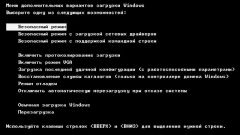Instruction
1
Make sure that you are rebooting the computer correctly. Click on the "start menu" in the lower left corner of the desktop. Click on the arrow to the right of "shutdown" and select "Restart". If in the system no problem, the computer should automatically reboot.
2
Close all of your running apps if you press the same key to reboot system will not start. Wait a bit: some applications require a lot of time to save data and shutdown. If an application is hung and not responding to your actions, or reboot the system to start even in the absence of open Windows, press Ctrl+Alt+Del to start task Manager.
3
Make sure the Applications tab in task Manager is empty, otherwise select povisshie program and click "end task" to force quit. Next, go to the Processes tab. Please note the list of current processes and see if any of them are familiar names. Sometimes after the application completes its process remains active, causing the system to hang and not to respond to user requests. Complete force all user processes then close task Manager and try again to restart the system.
4
Remember, not if you have downloaded updates to the operating system from the Internet. Their installation is made when you restart the computer, which increases the duration of the process. Watch the behavior of the system and notice that does not appear on the message screen about installing the downloaded updates.
5
Scan the system with updated antivirus database protection. Some viruses and malicious programs to violate the system performance and cause various problems, including the inability to reboot.
6
Try a system restore to the moment when reboot was carried out without problems. In the folder "utilities" in "start menu" select "system Restore". Specify a suitable point of rollback, and run the process. After it finishes the computer will restart and the system will return to the previous state when new bugs were not yet available.










